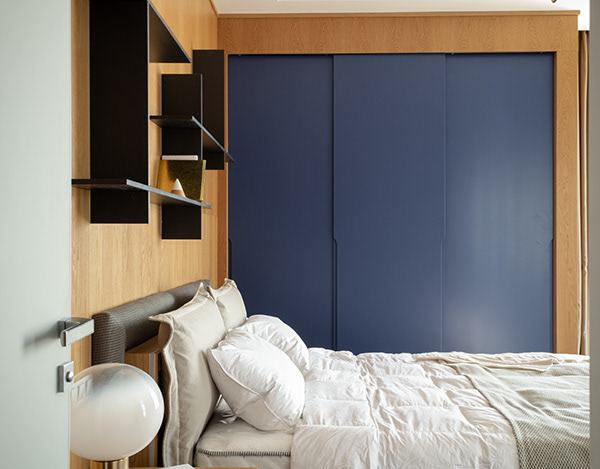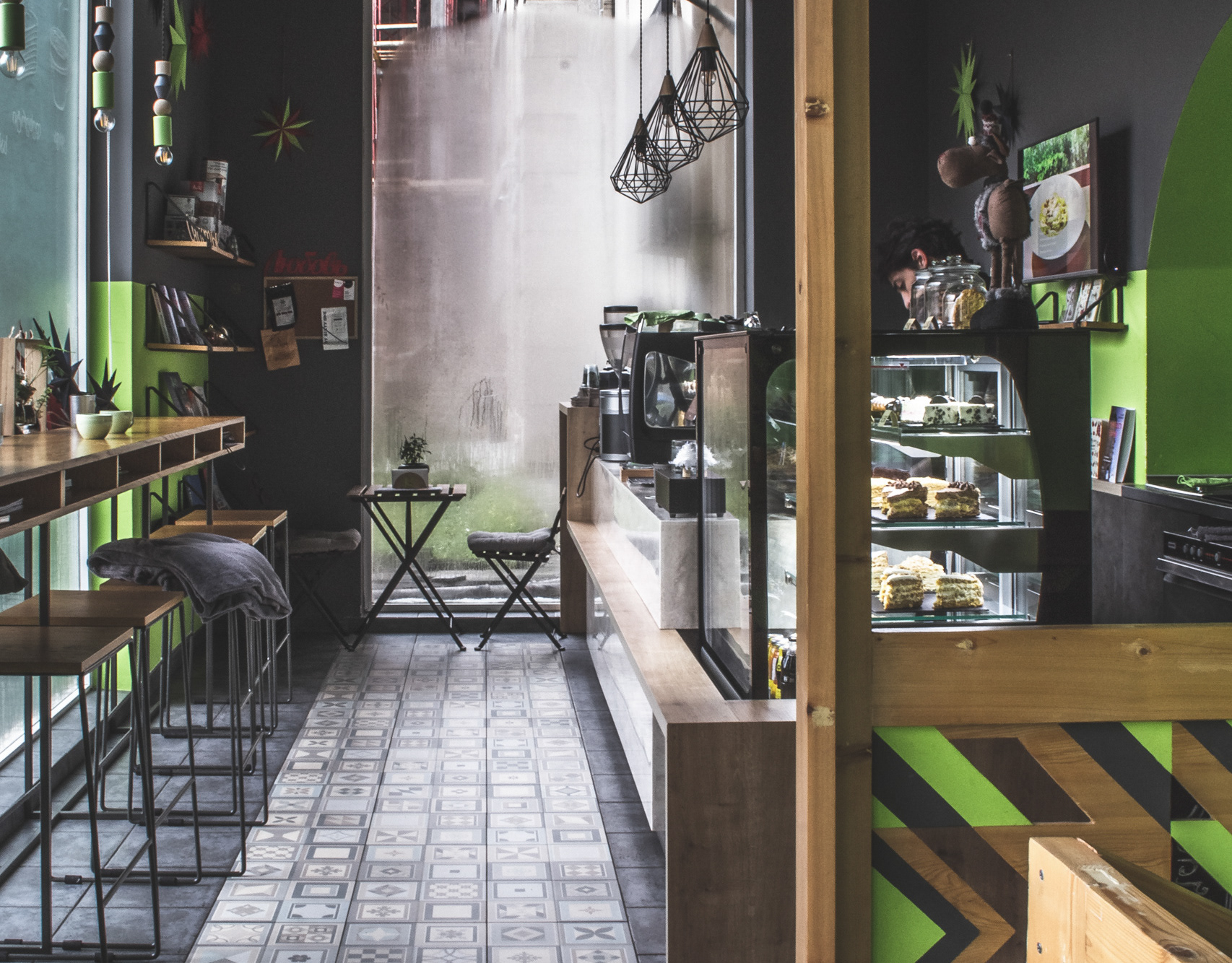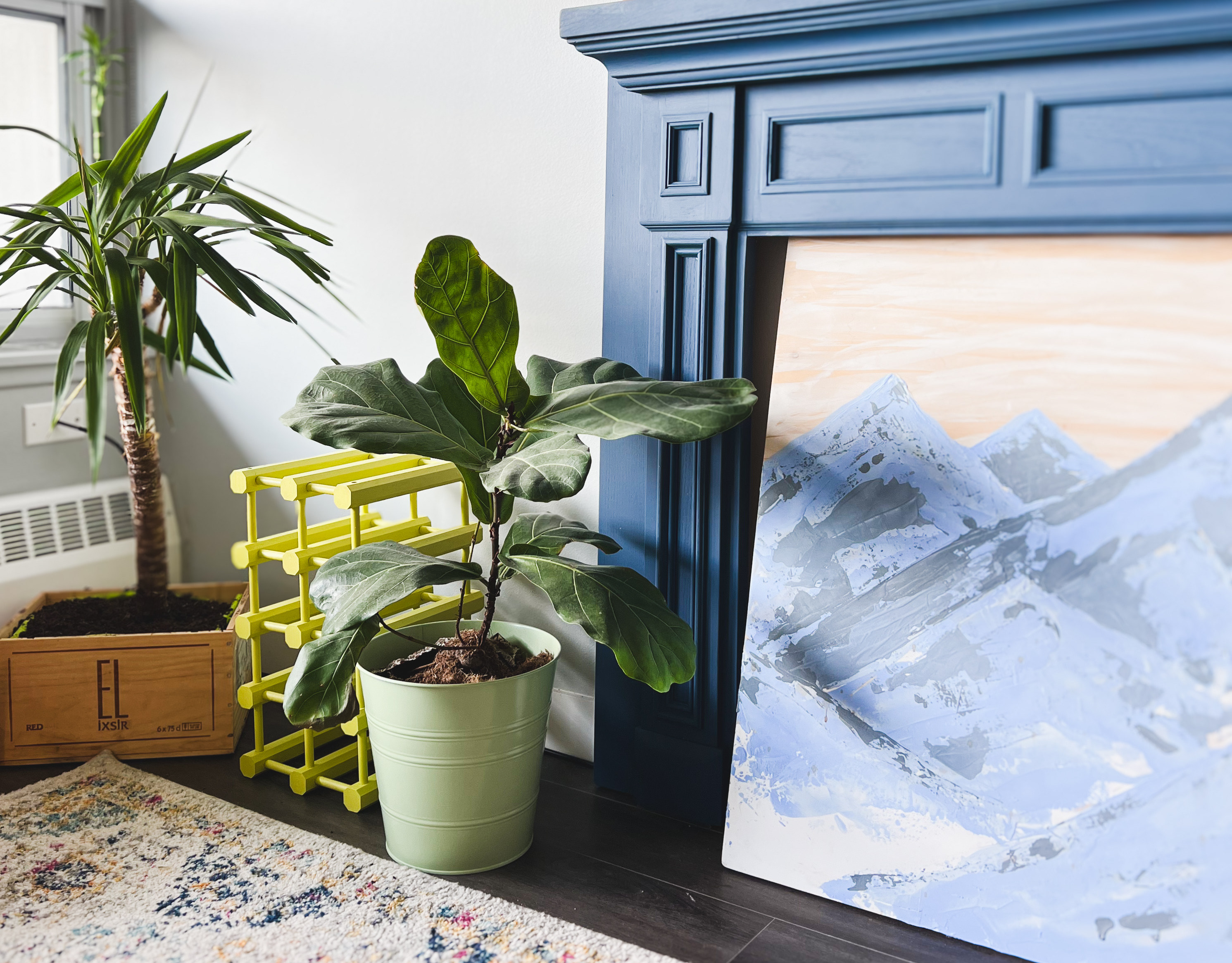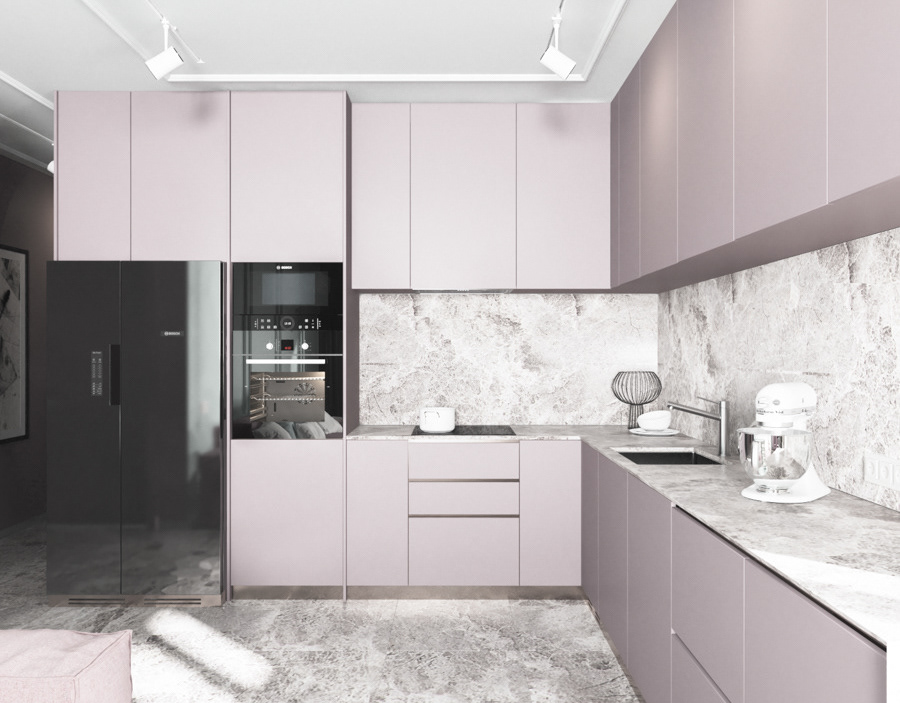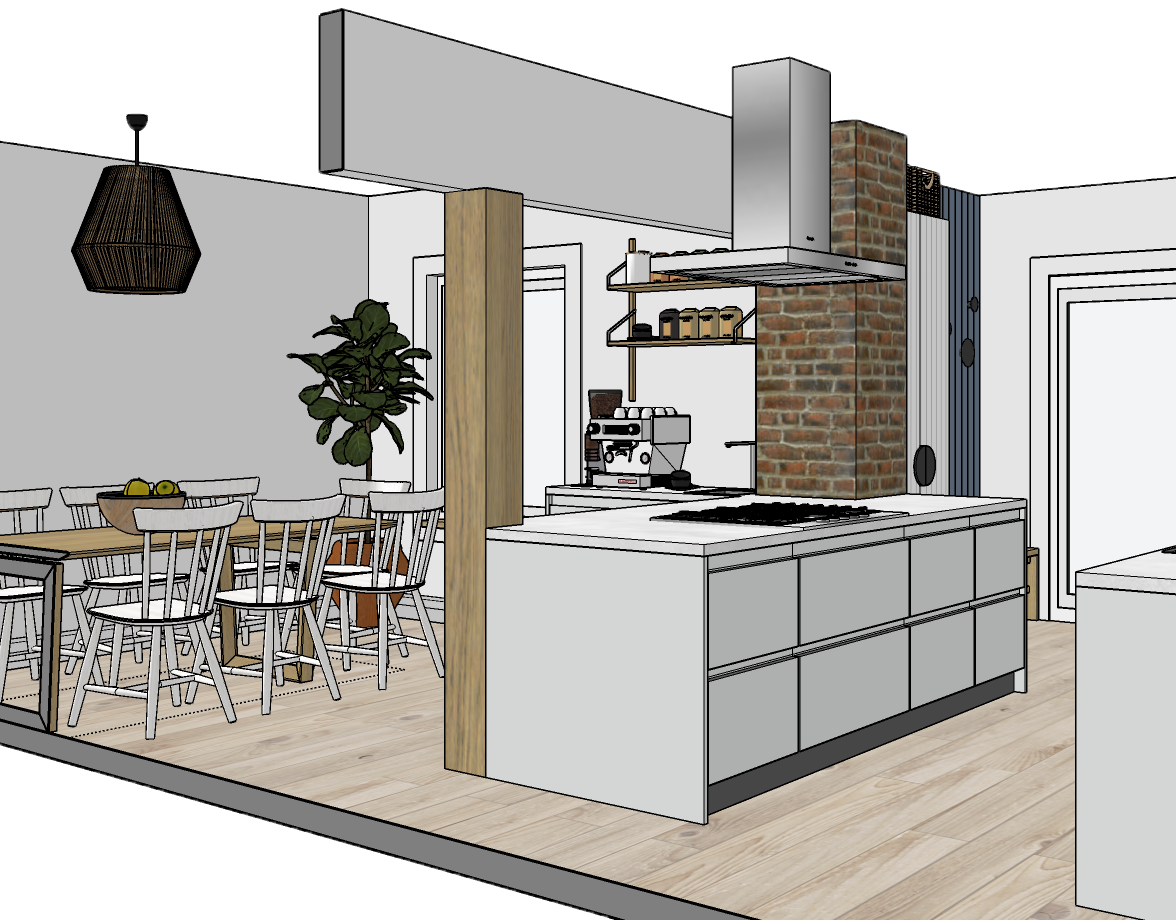Recording
Studio
Masterskaya
Before starting to design a recording studio
There are several important first steps that you should take:
Define the purpose of the recording studio: The first step is to define the purpose of the recording studio. Is it going to be a commercial studio that will be used to record professional musicians, or is it going to be a home studio that will be used for personal recording projects?
Determine the budget: The budget is an important factor that will help you determine the scope of your project. It is important to have a realistic budget in mind before starting the design process.
Determine the location: The location of the recording studio is also an important factor to consider. If it is a commercial studio, it should be located in an area that is easily accessible to clients. If it is a home studio, you need to choose a location that is quiet and isolated from external noise.
Assess the acoustic properties of the space: Acoustics is one of the most important considerations when designing a recording studio. You need to assess the acoustic properties of the space to determine whether it is suitable for recording or not.
Determine the equipment and gear needed: Once you have determined the purpose, budget, location, and acoustic properties of the space, you can start to determine the equipment and gear that will be needed for your recording studio.
By taking these first steps, you will be better prepared to design a recording studio that meets your needs and budget.

reception at the studio
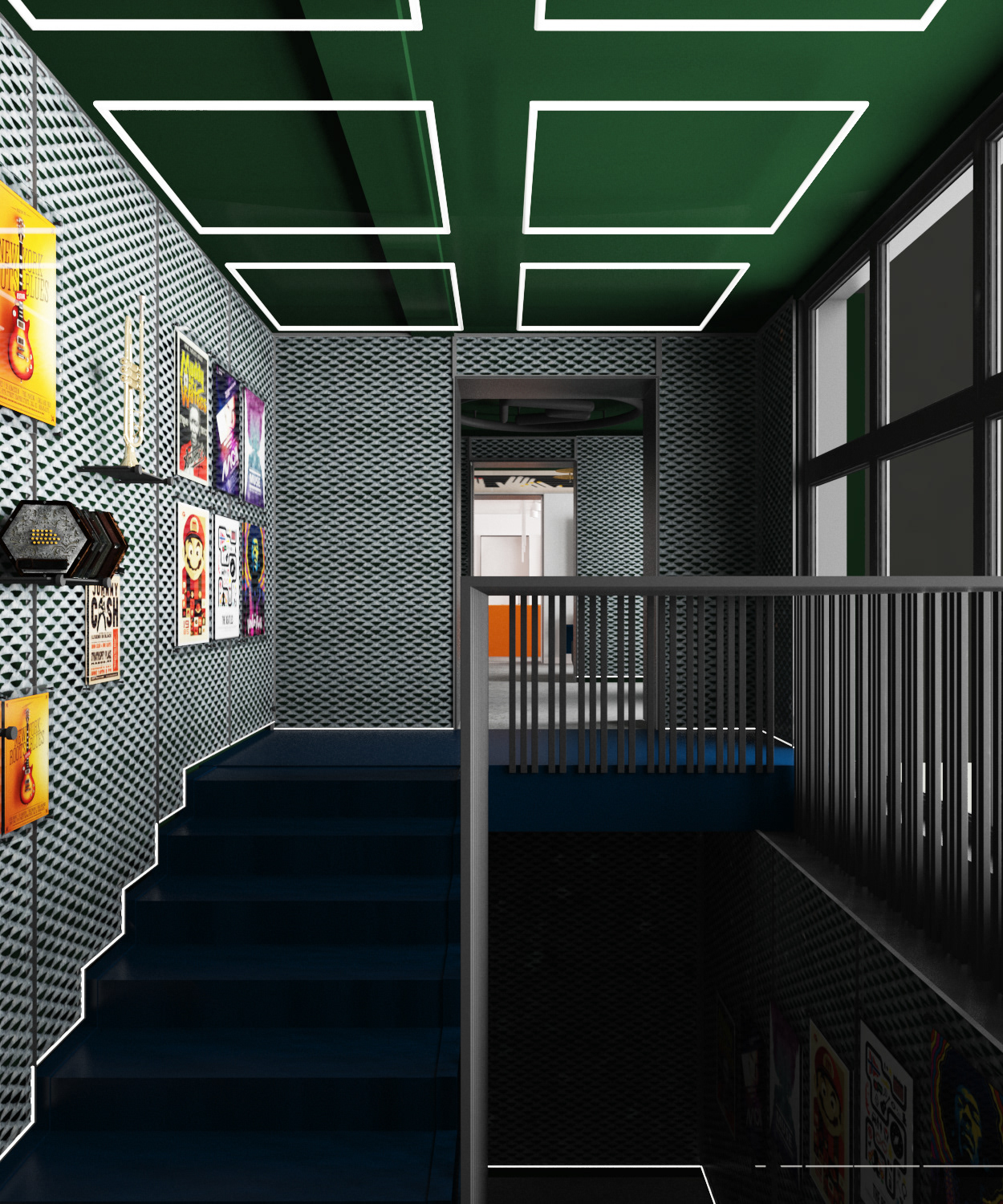
hall of fame aka stairs
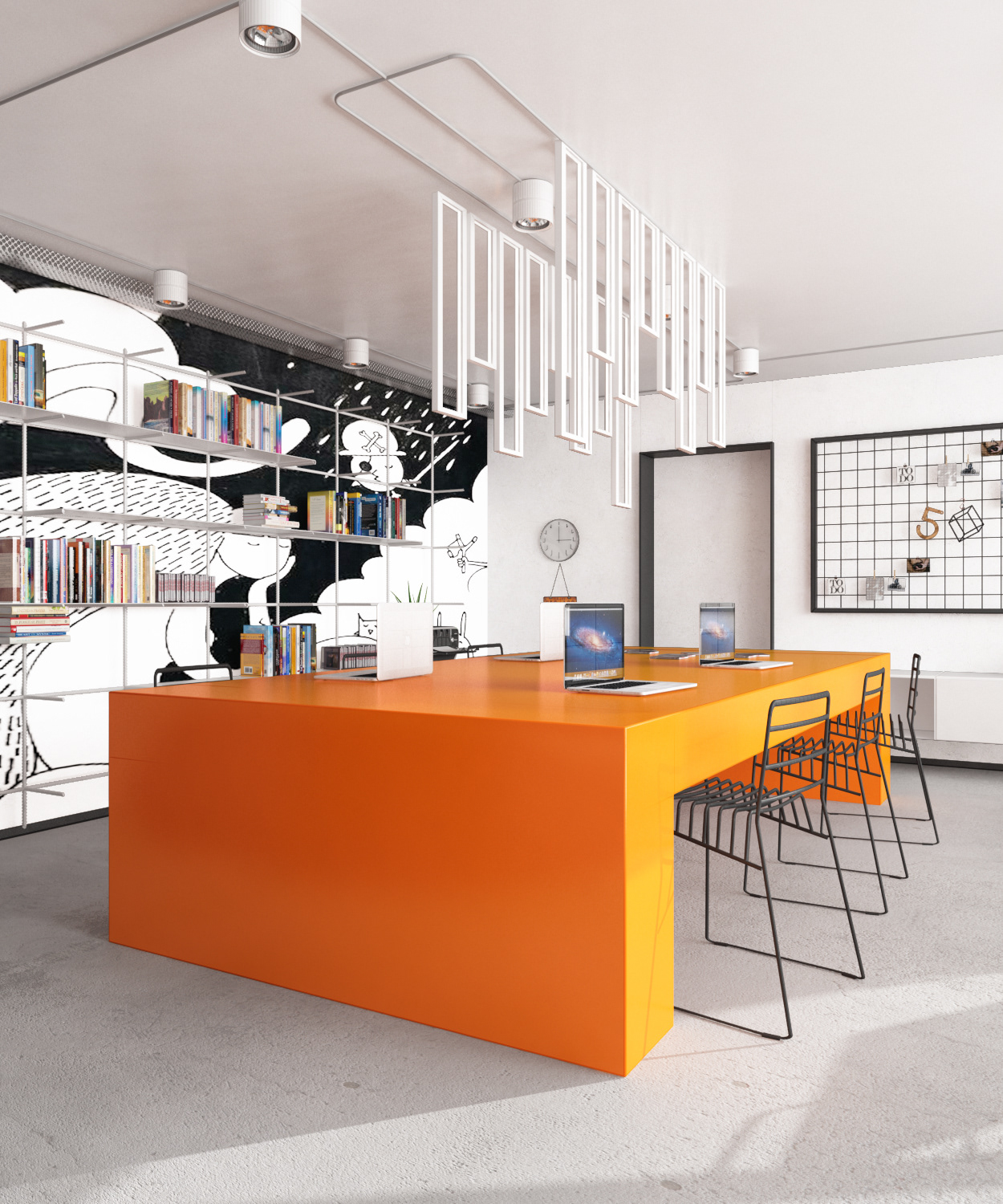
above ground office
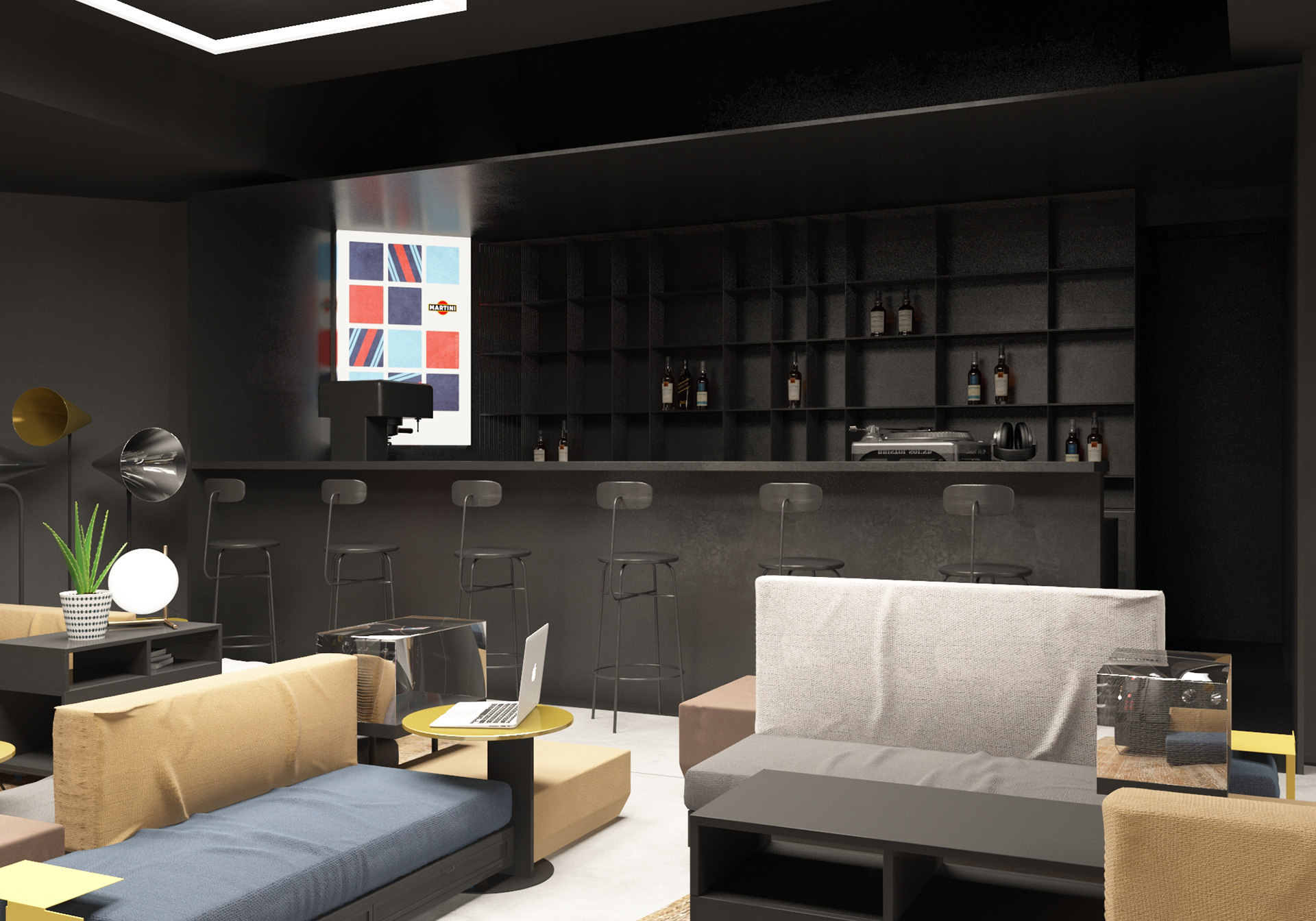
bar at the studio with a small kitchen behind
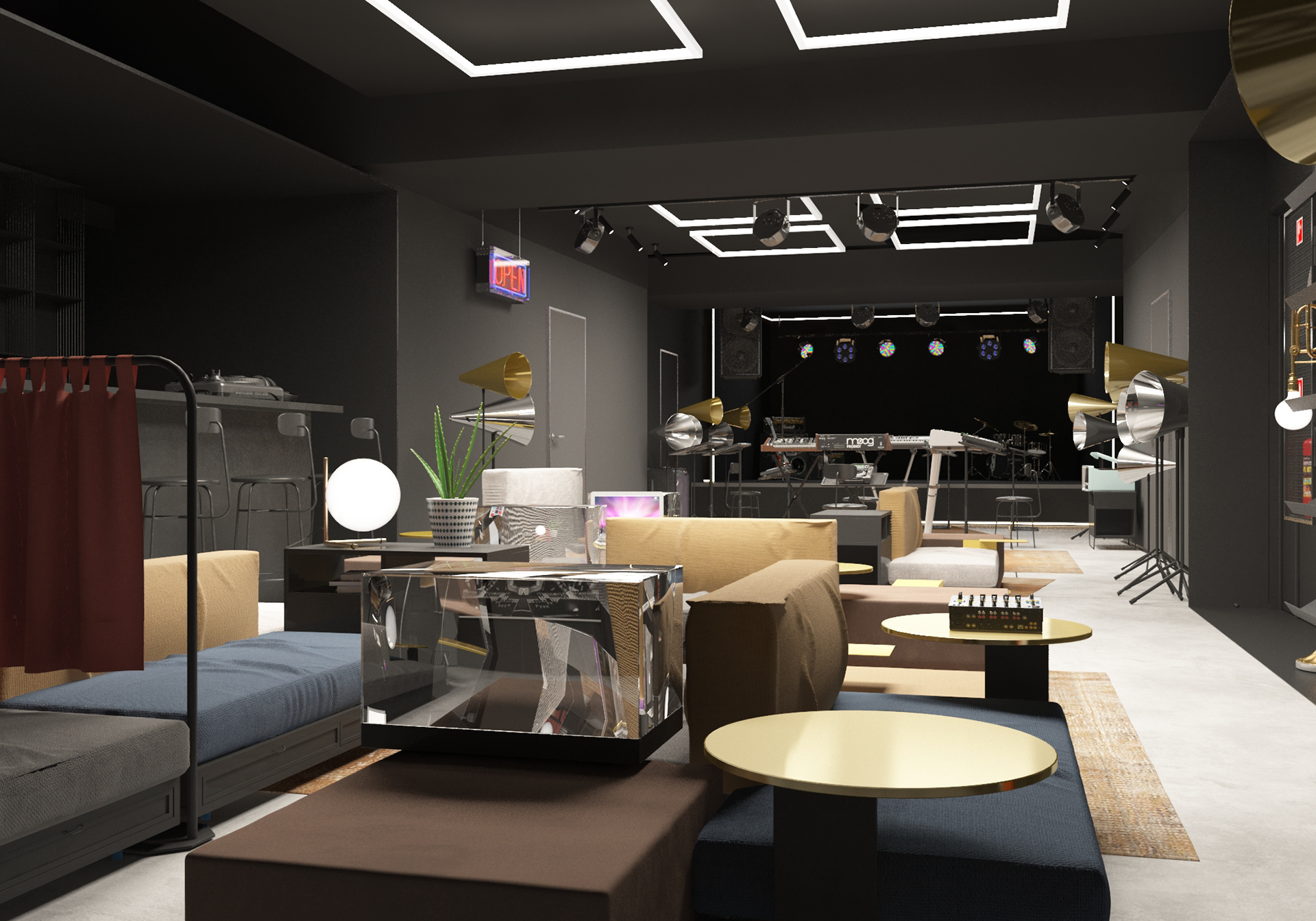
main studio with a coworking space

dark washroom in studio
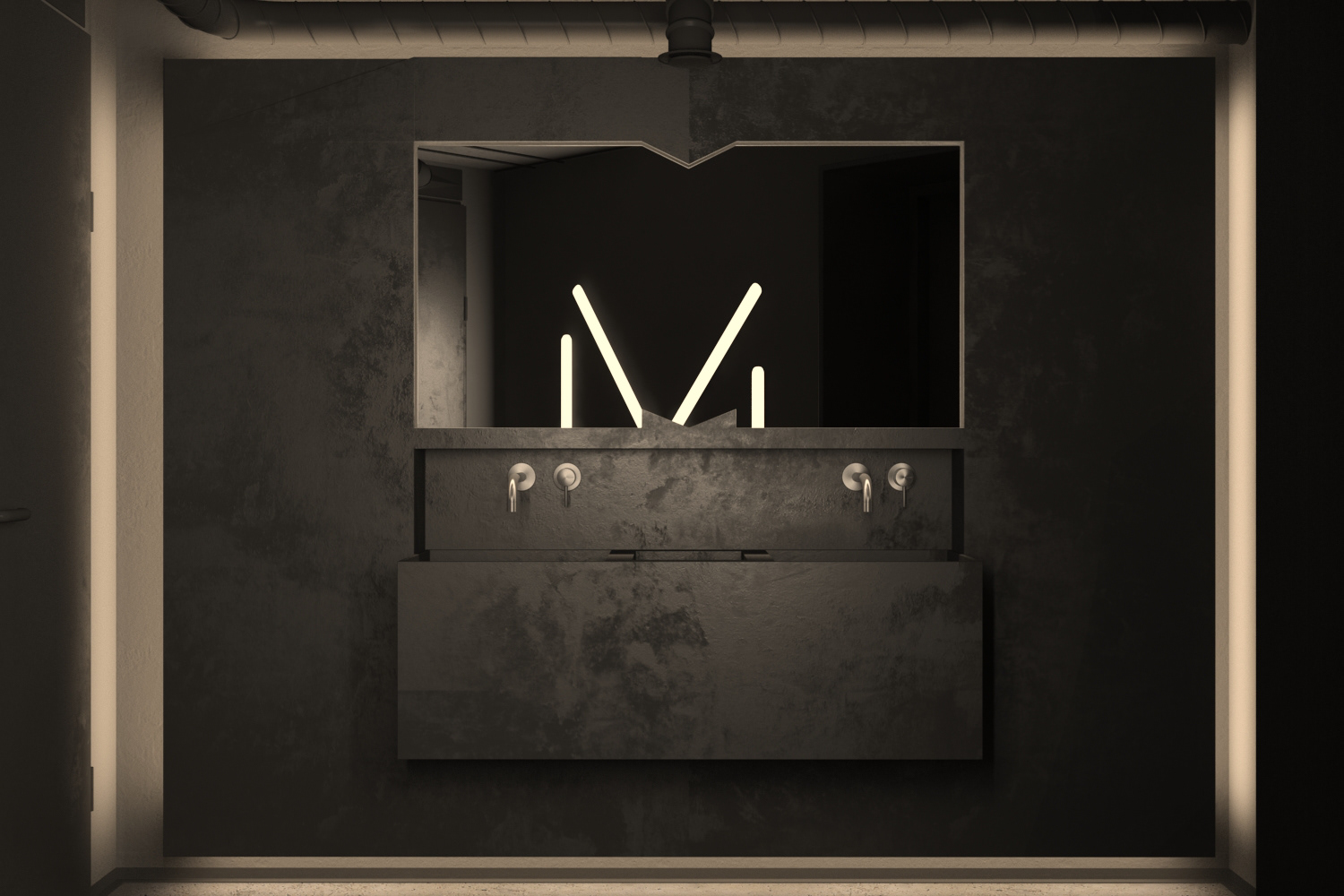
dark washroom in studio
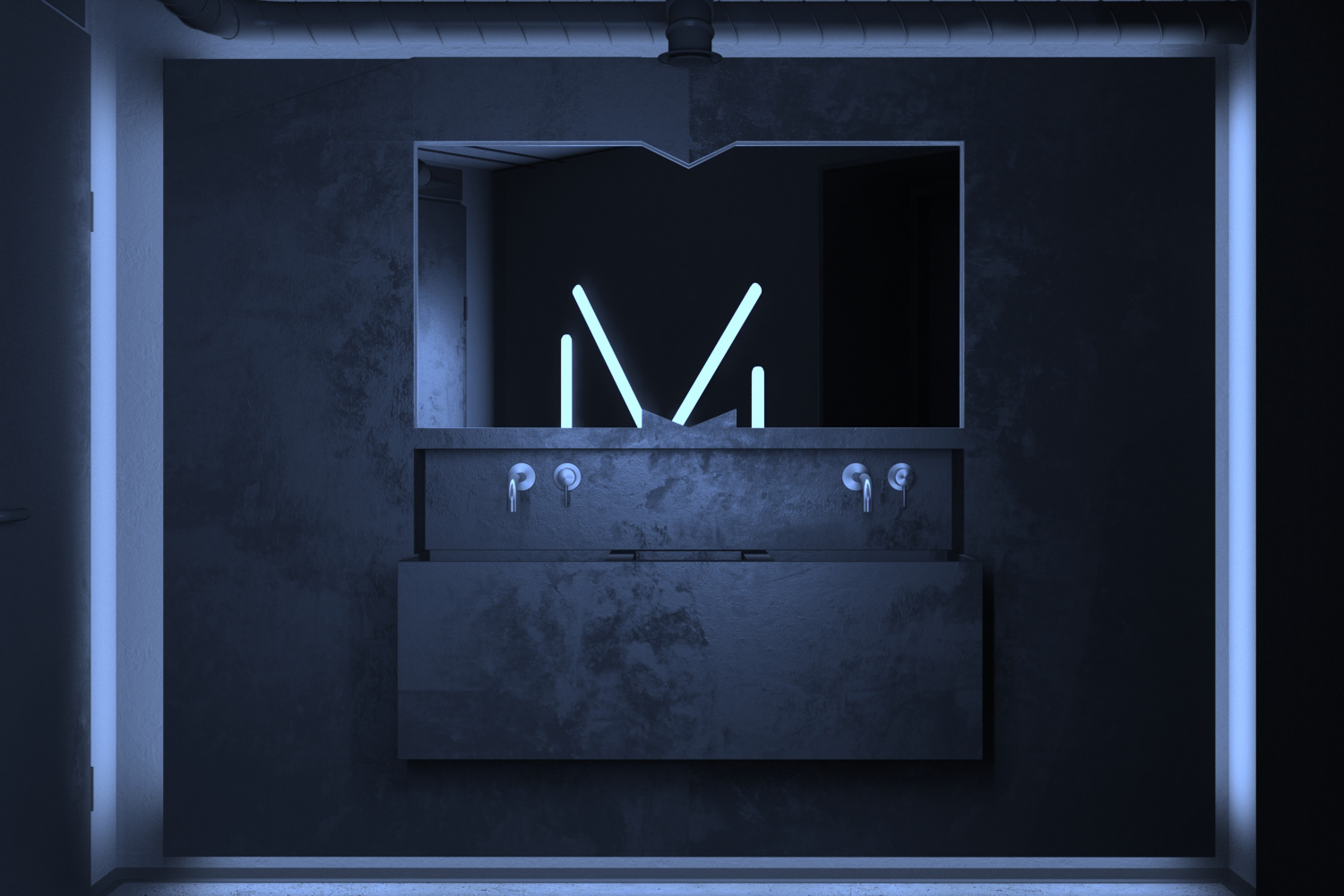
dark washroom in studio
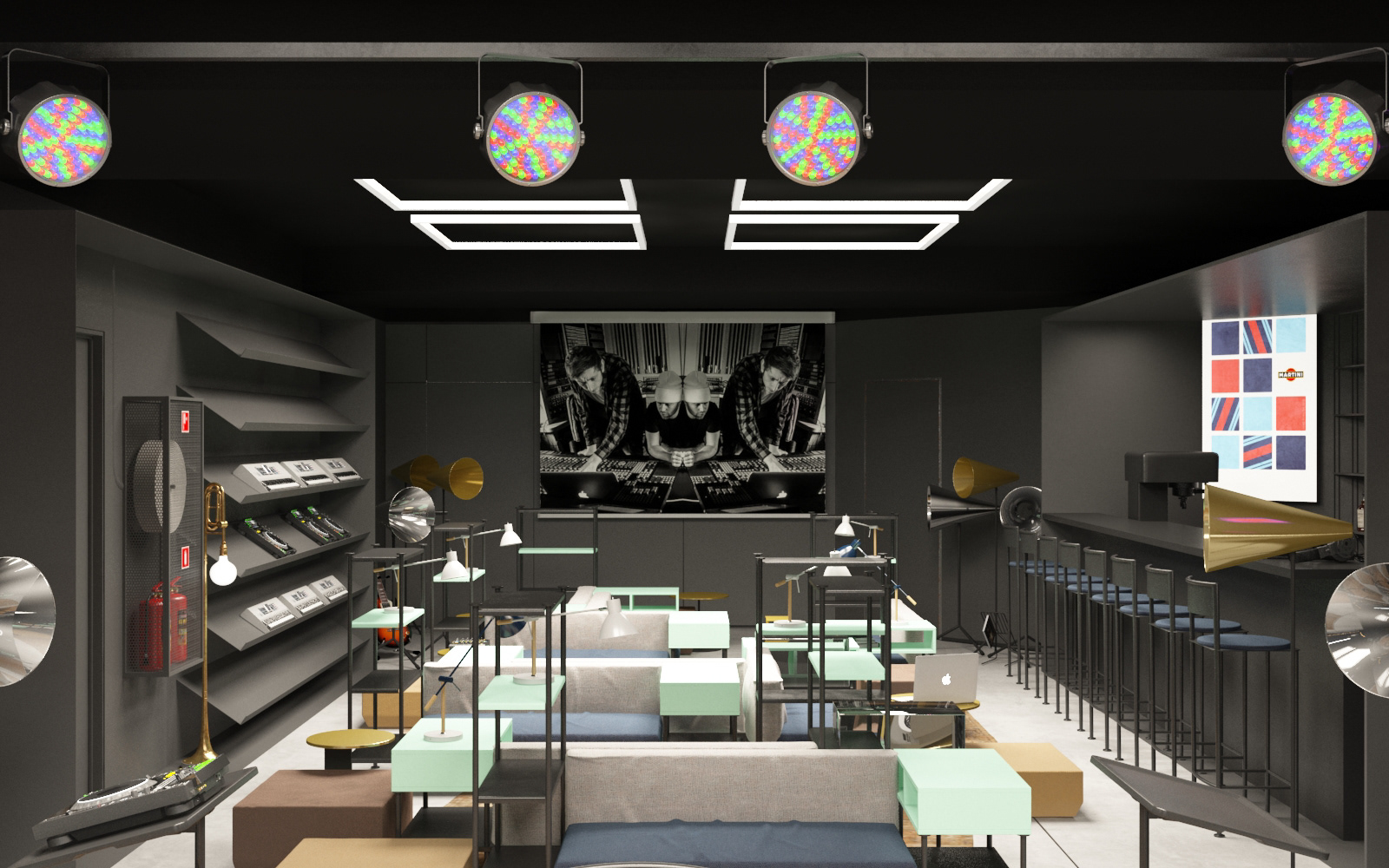
bar view at main studio
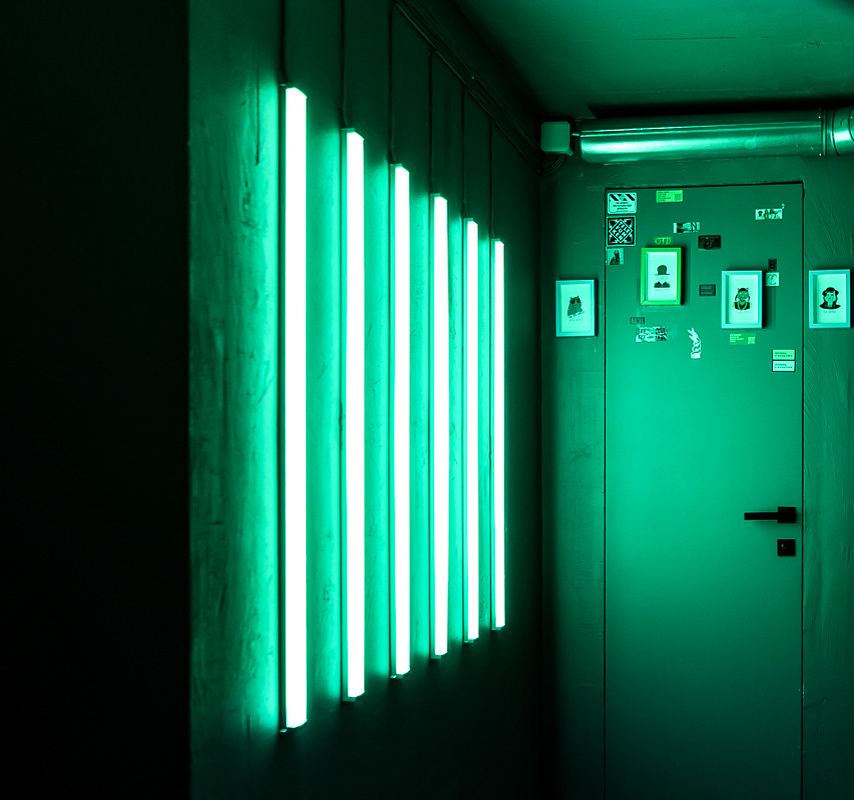

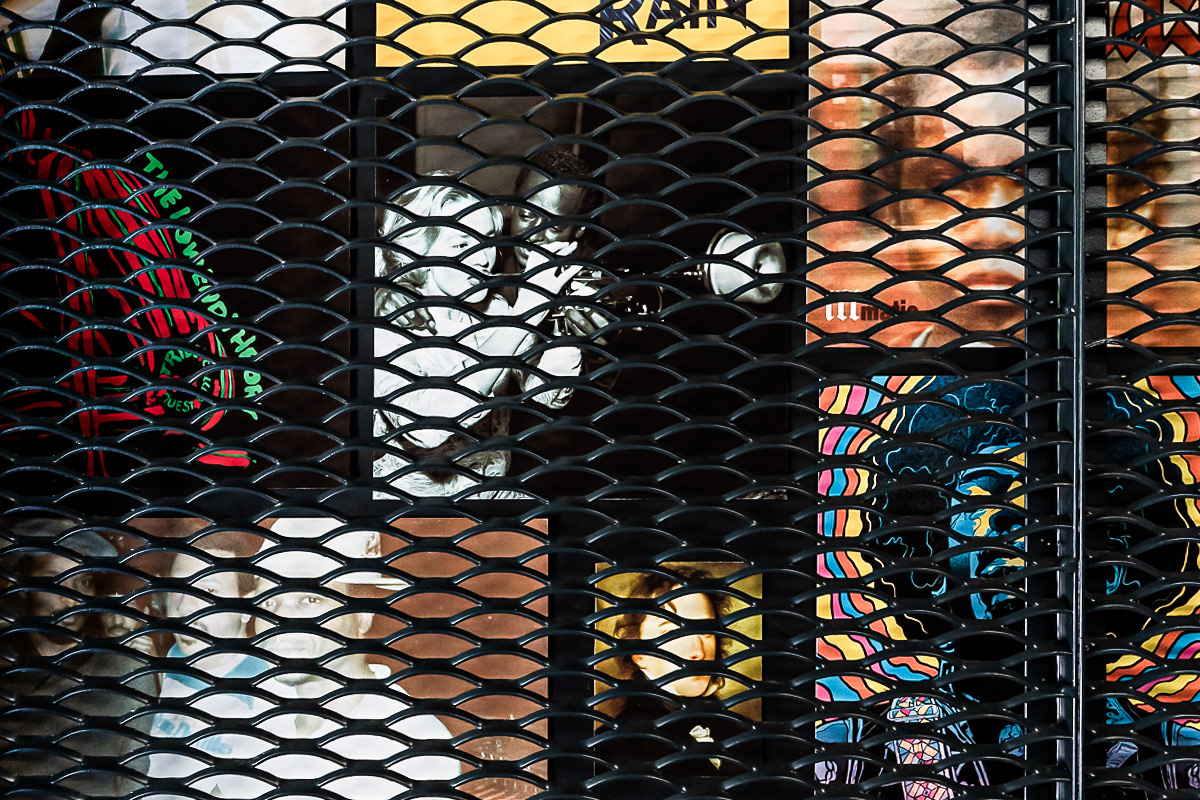

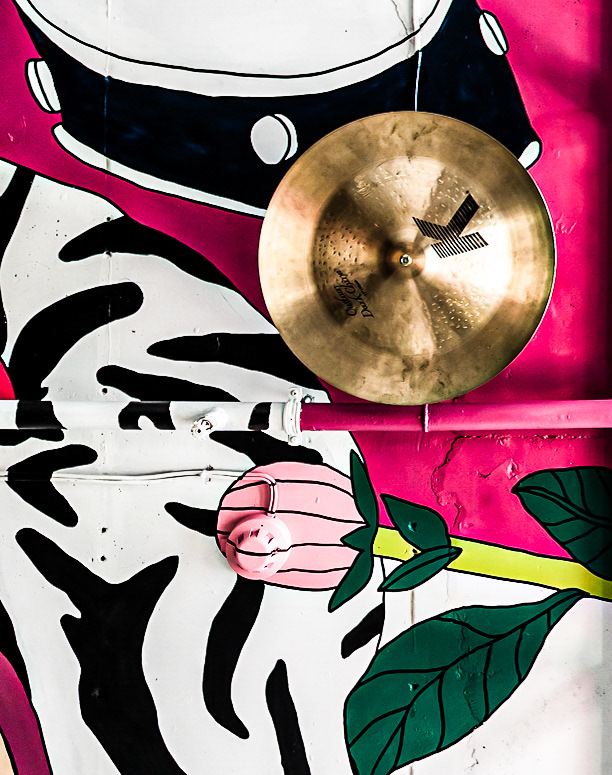
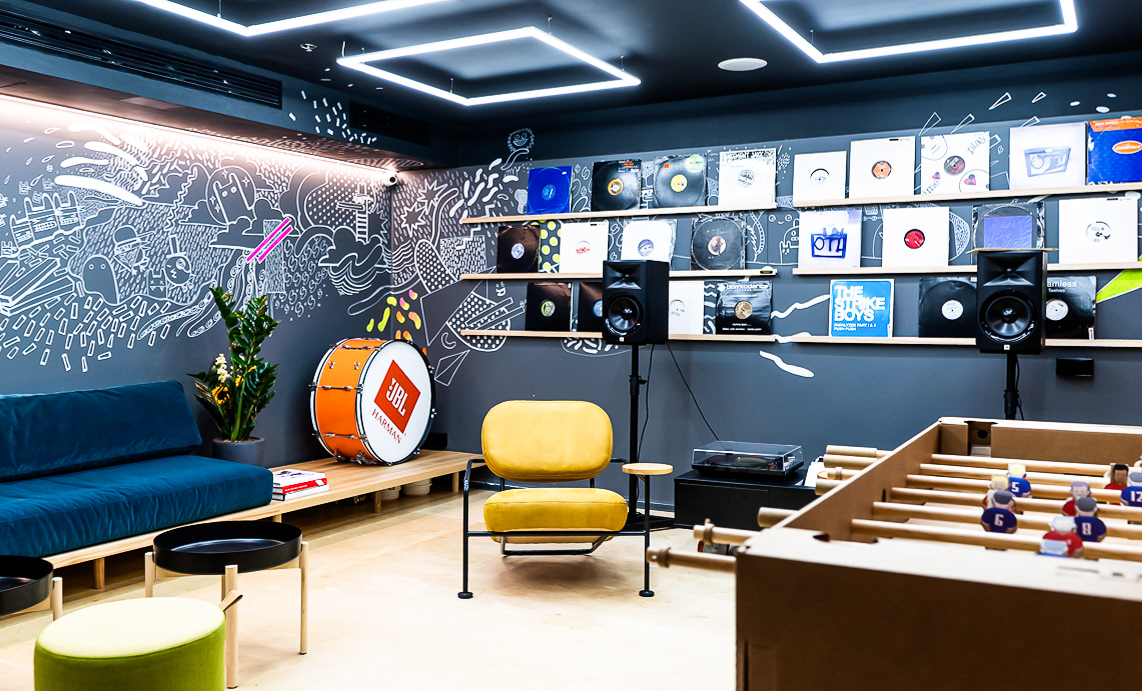
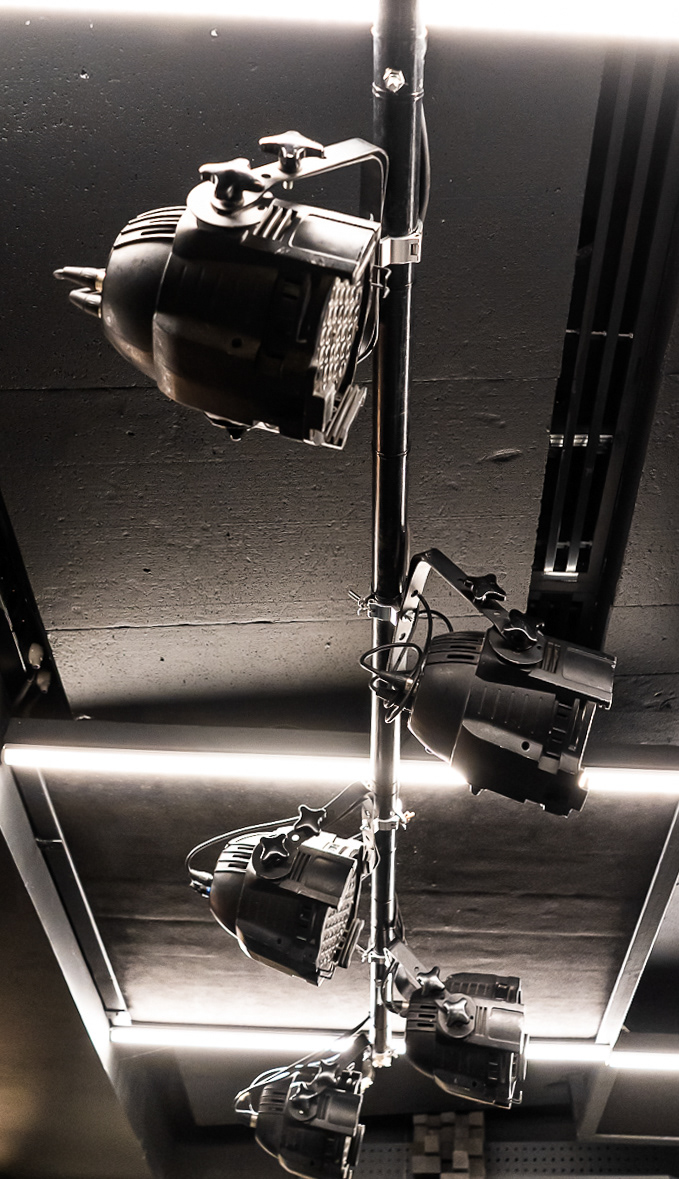
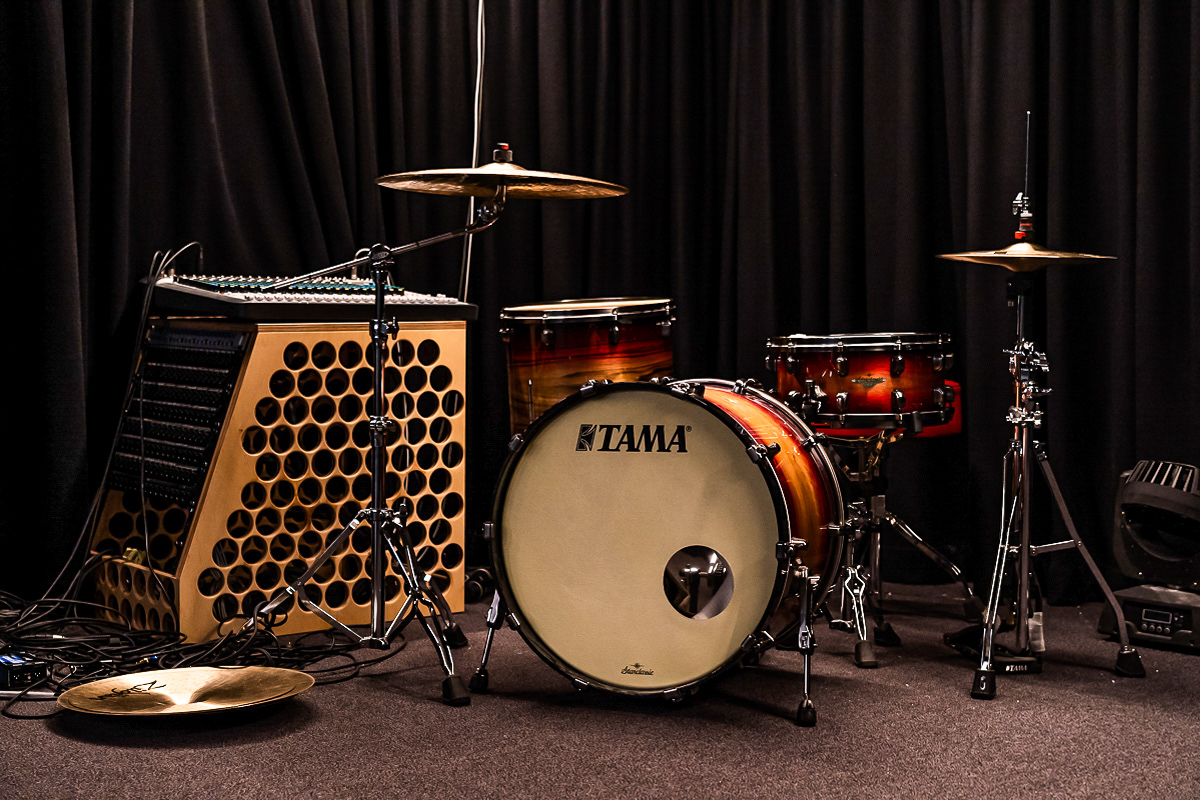


idea search
Use unconventional materials: Consider using unconventional materials in the design of your recording studio. For example, you could use reclaimed wood, recycled glass, or other sustainable materials to create a unique and eco-friendly space.
Incorporate art and graphics: Adding art and graphics to your recording studio can create a visually stimulating environment that inspires creativity. Consider commissioning an artist to create a mural or incorporating graphic designs on the walls or equipment.
Design for flexibility: Design your recording studio with flexibility in mind, allowing for easy reconfiguration of the space to accommodate different recording needs. This could include movable walls, modular furniture, or equipment that can be easily repositioned.
Use lighting creatively: Lighting can play a significant role in creating a mood and atmosphere in your recording studio. Consider using different types of lighting, such as dimmable LED lights, colored lights, or spotlights, to create different effects and moods.
Add natural elements: Incorporating natural elements, such as plants or a water feature, can create a calming and relaxing environment that encourages creativity. You could also consider using natural materials, such as stone or wood, in the design of your studio.
These are just a few ideas to get you started on designing a creative recording studio. Remember to keep the purpose and budget in mind, and to design a space that meets your specific recording needs.
small recording room and its structure

main room at the studio

main room at the studio
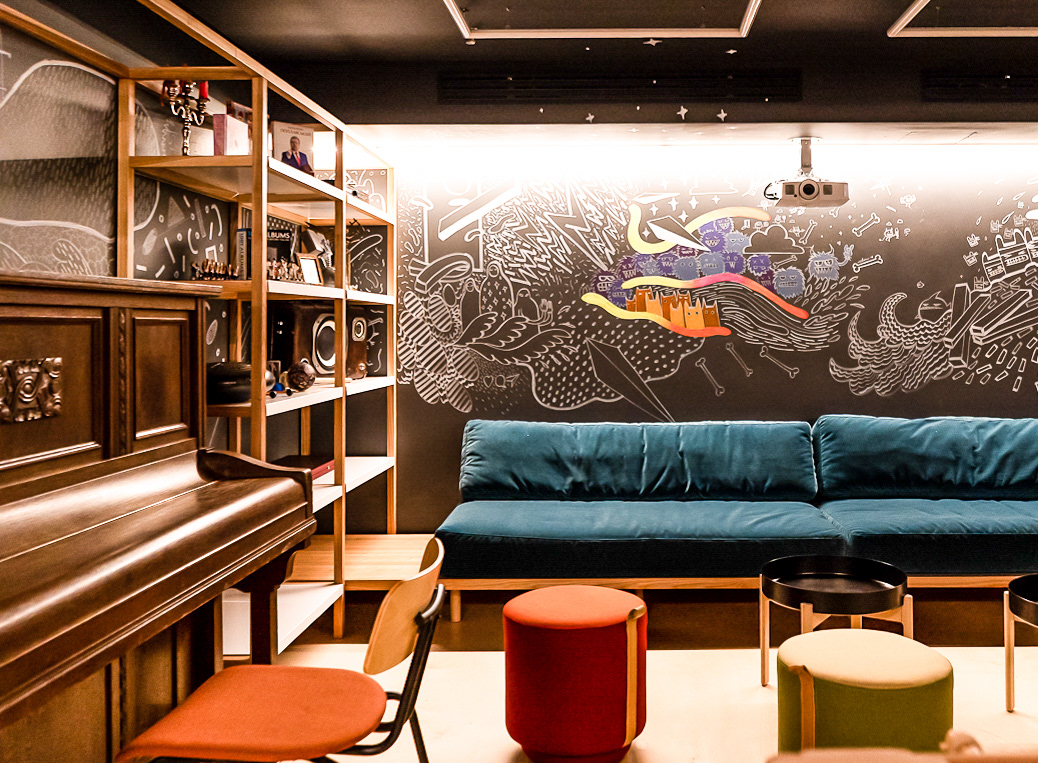
playroom at the studio for kids and grow-ups kids
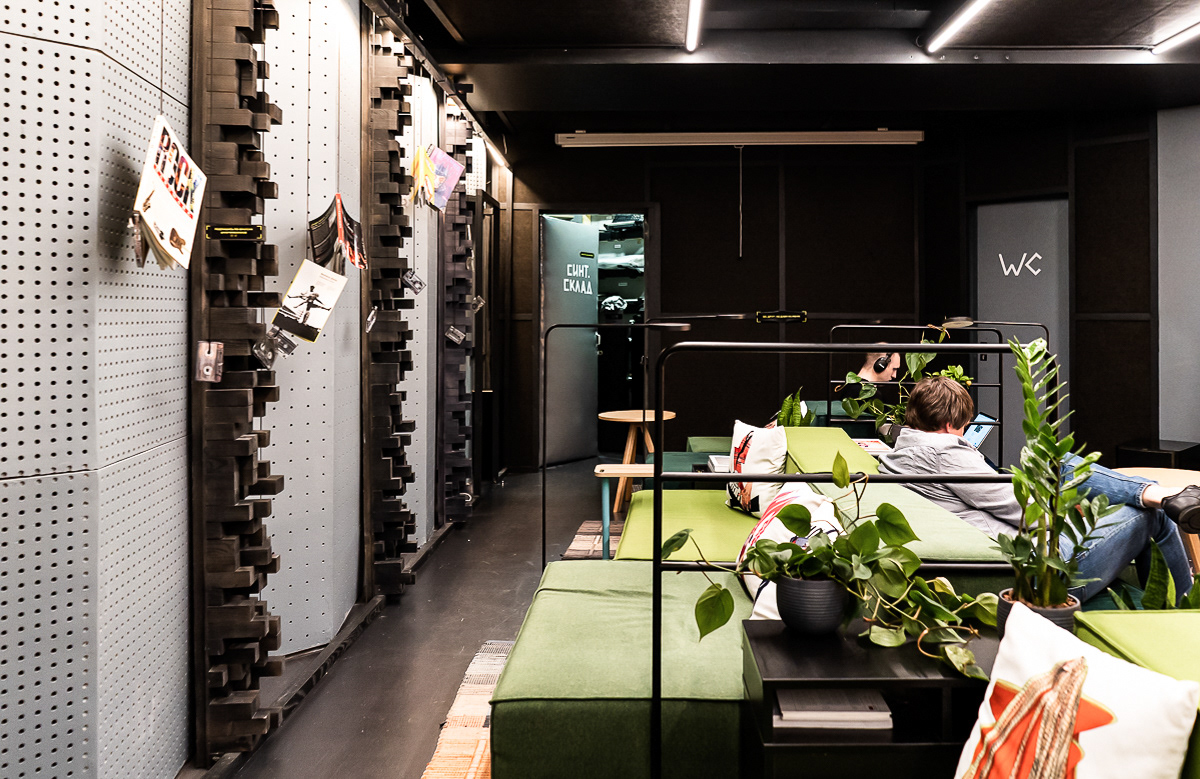
main room at the recording studio

main room at the recording studio

sound reflectors on soundproof panels
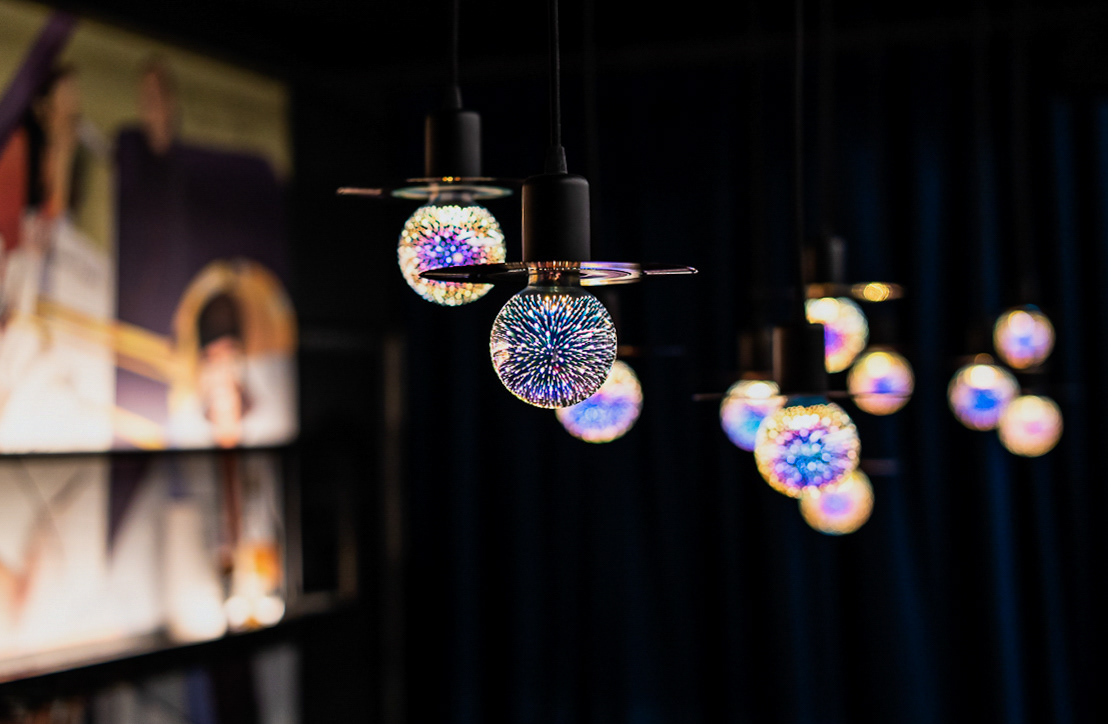
light atmosphere creation
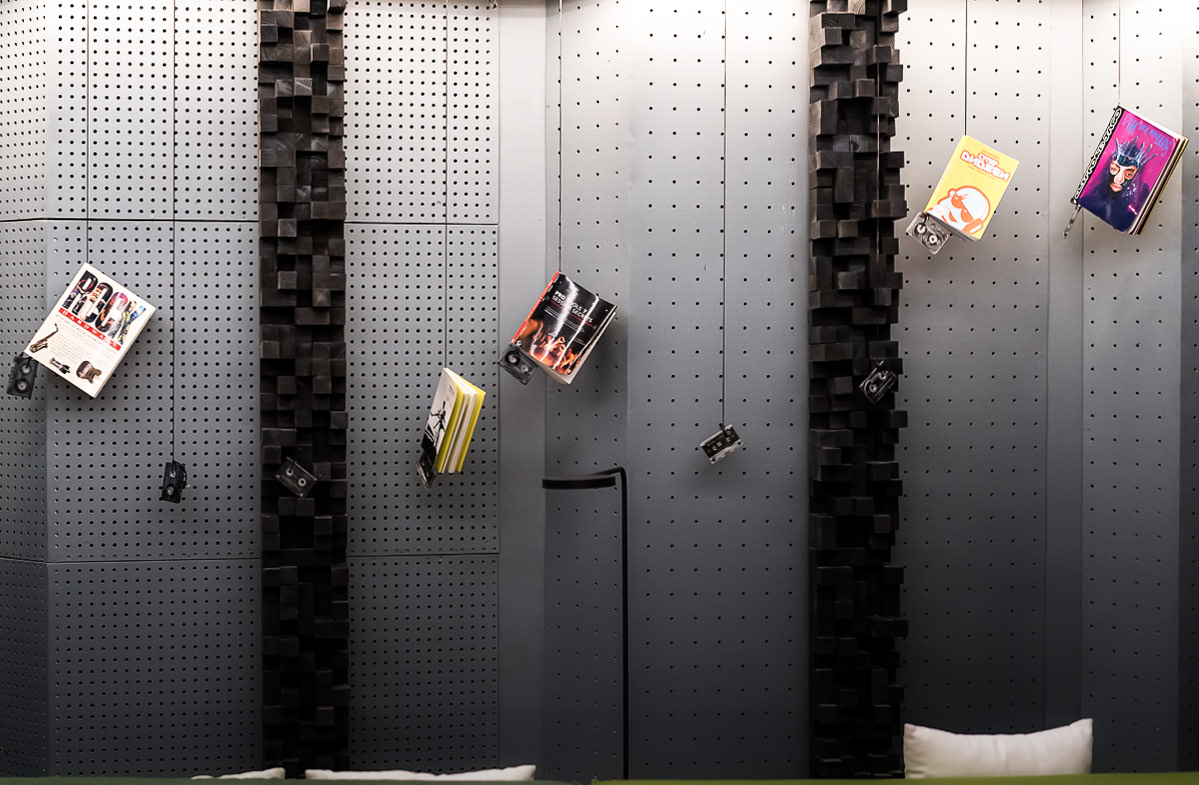
sound wall panels
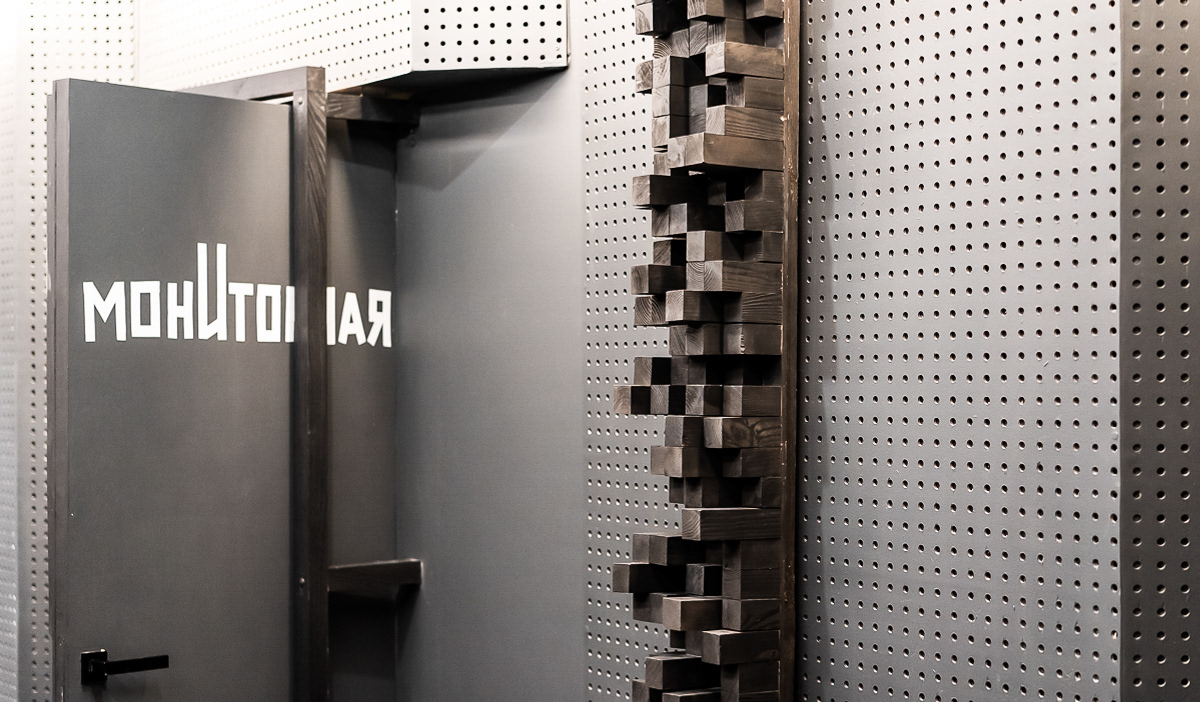
sound wall panels
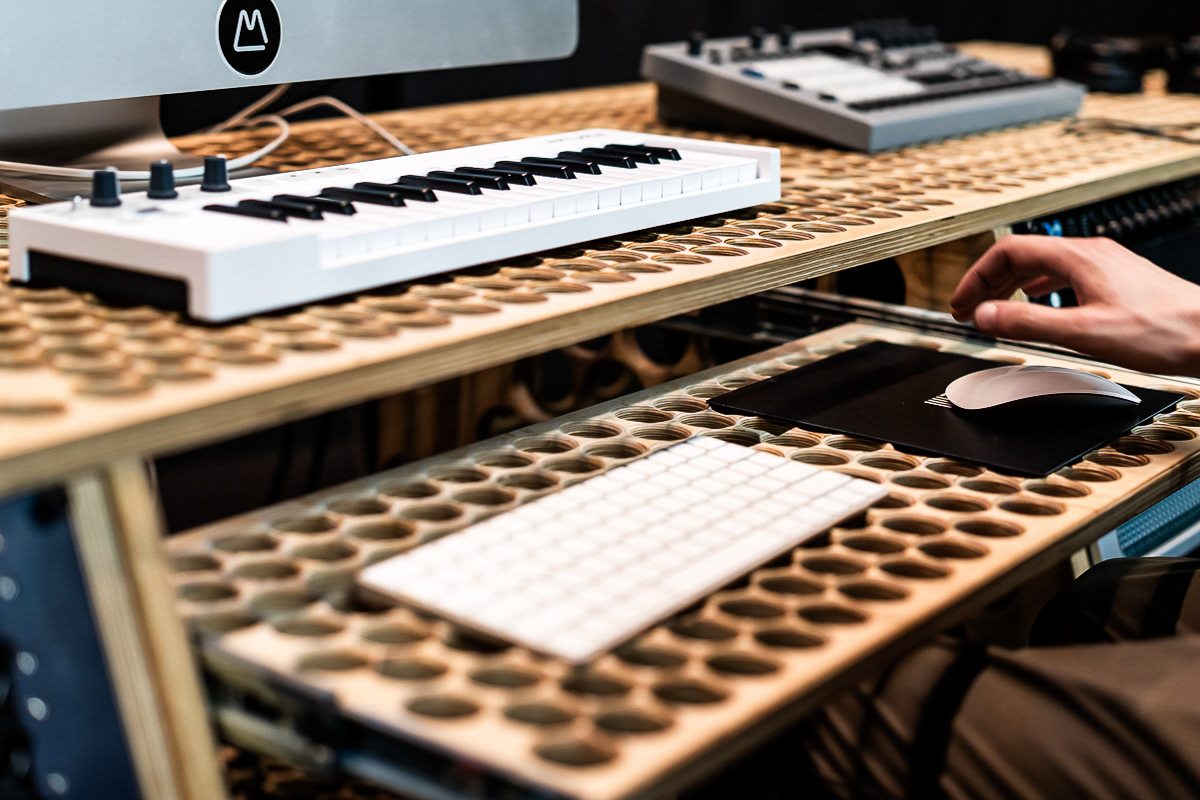
sound-through desk for recording studio
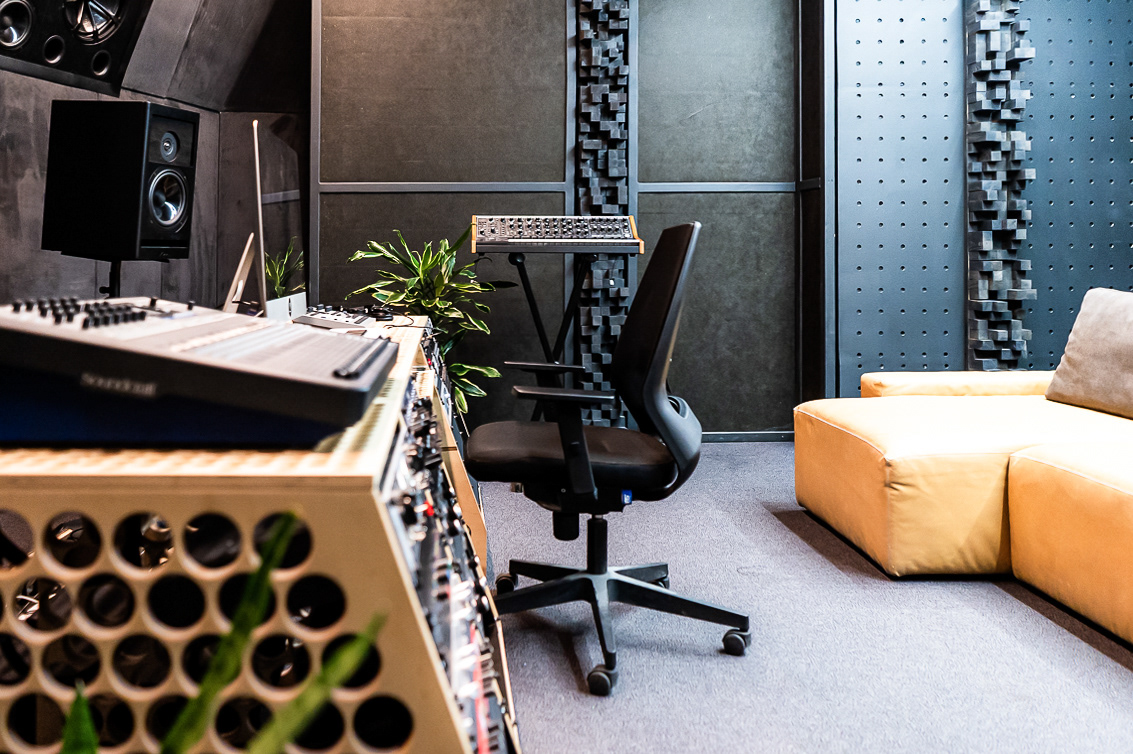
sound-through desk for recording studio
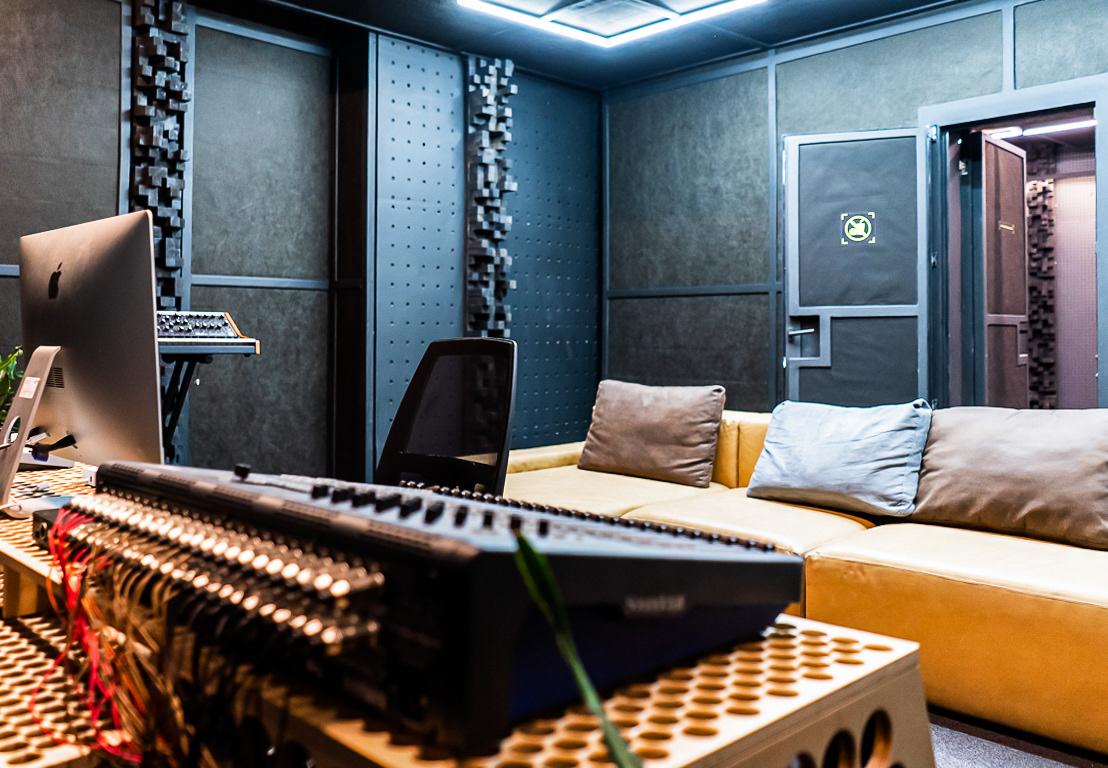
recording room
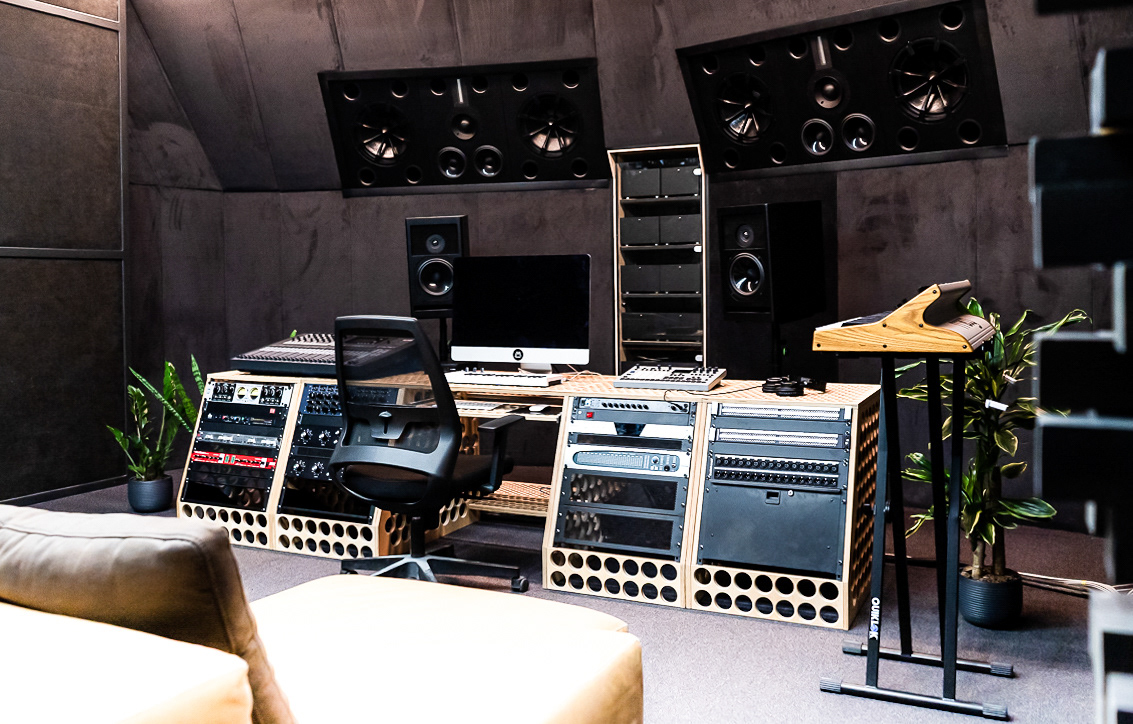
recording room
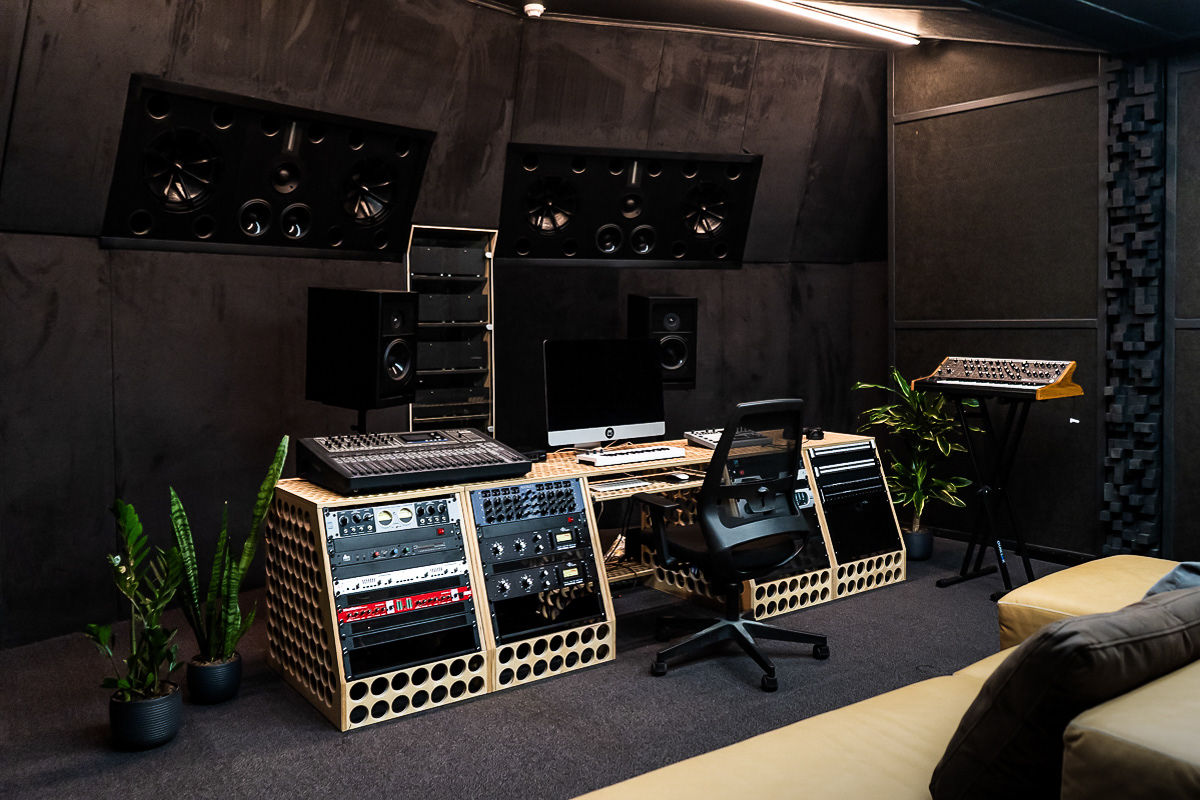
main recording room

recording equipment
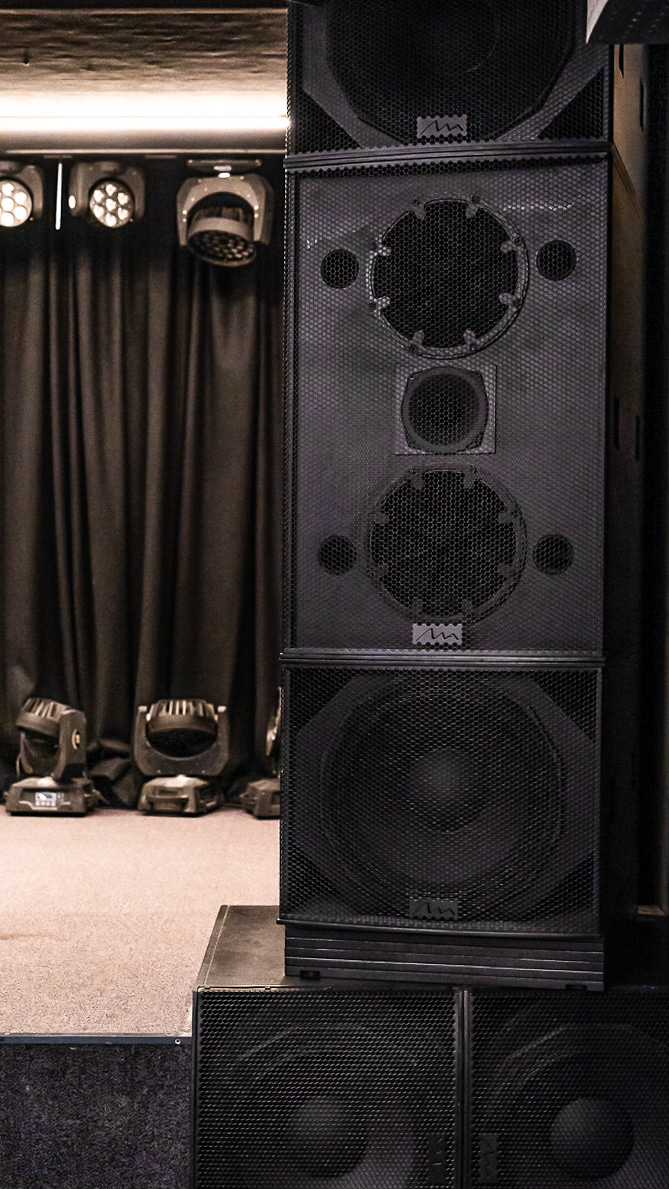
sound bars
Steps to consider When designing a recording studio interior
It's important to create an environment that's conducive to the high-quality sound recording while also being visually appealing and comfortable for the performers and technicians. Here are some ideas to consider:
Acoustic Treatment: Acoustic treatment is critical in a recording studio to ensure that the sound is clear and precise. You can consider installing acoustic panels on the walls, ceilings, and floors to help control the sound reflections.
Lighting: Lighting can set the mood for a recording session. You can consider installing dimmable lights or colored lights to help create the desired atmosphere.
Color Scheme: The color scheme can impact the overall ambiance of the studio. You can consider using neutral colors such as white, grey, or black to create a modern and professional look.
Furniture: Comfortable and ergonomic furniture is important for performers and technicians. You can consider installing custom-made furniture that is both comfortable and functional.
Technology: Technology is a vital component of any recording studio. You can consider installing high-quality speakers, microphones, and other recording equipment to ensure that the sound quality is excellent.
Layout: The layout of the recording studio is also important. You can consider using an open-concept design to create a more spacious and inviting environment.
Decor: Adding decor such as artwork or plants can help to create a welcoming and inspiring atmosphere in the recording studio.
Storage: Storage is important for organizing equipment and keeping the space clutter-free. You can consider installing shelves, cabinets, and other storage solutions to keep the recording studio organized.
Soundproofing: Soundproofing is critical in a recording studio to prevent external noise from interfering with the recording process. You can consider installing soundproof curtains or doors to help control the sound.
Reception area: If your recording studio has a reception area, you can consider installing comfortable seating, a coffee machine, and other amenities to create a welcoming space for guests.
small recording room
soundproof panels and reflectors
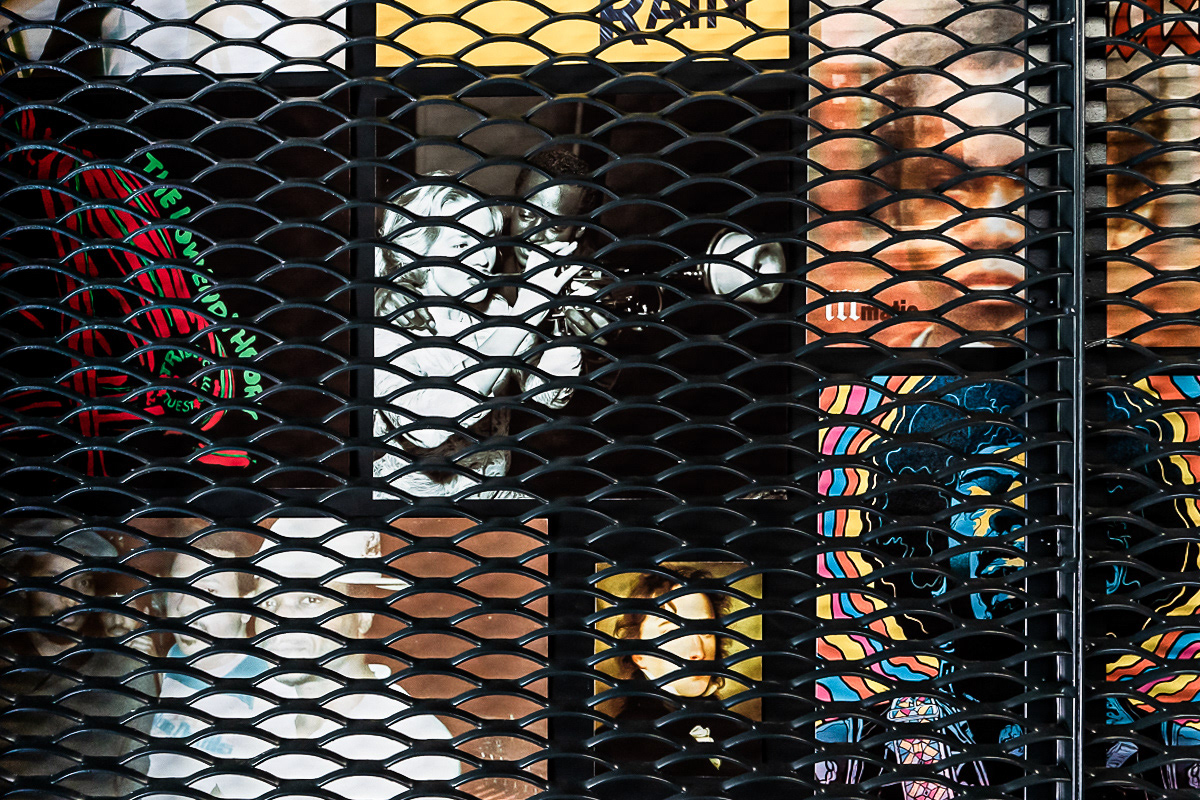
metal mesh with artwork behind
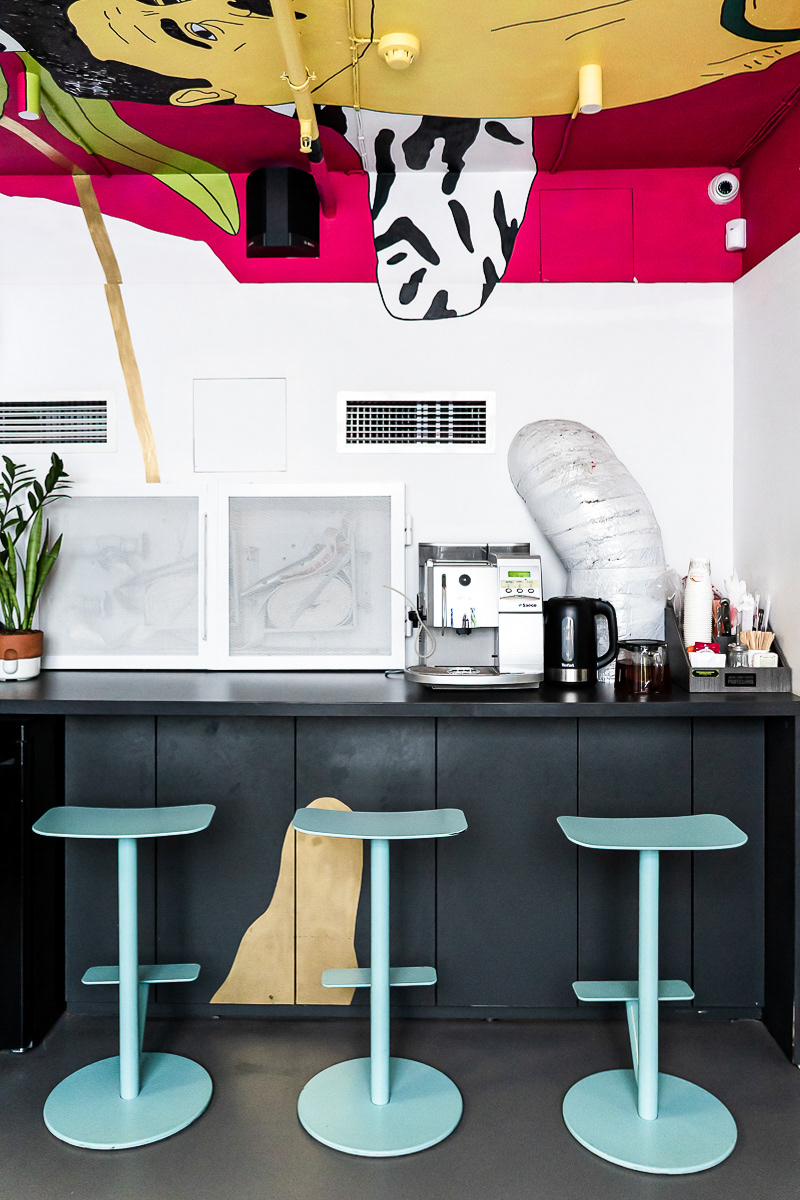
coffee station
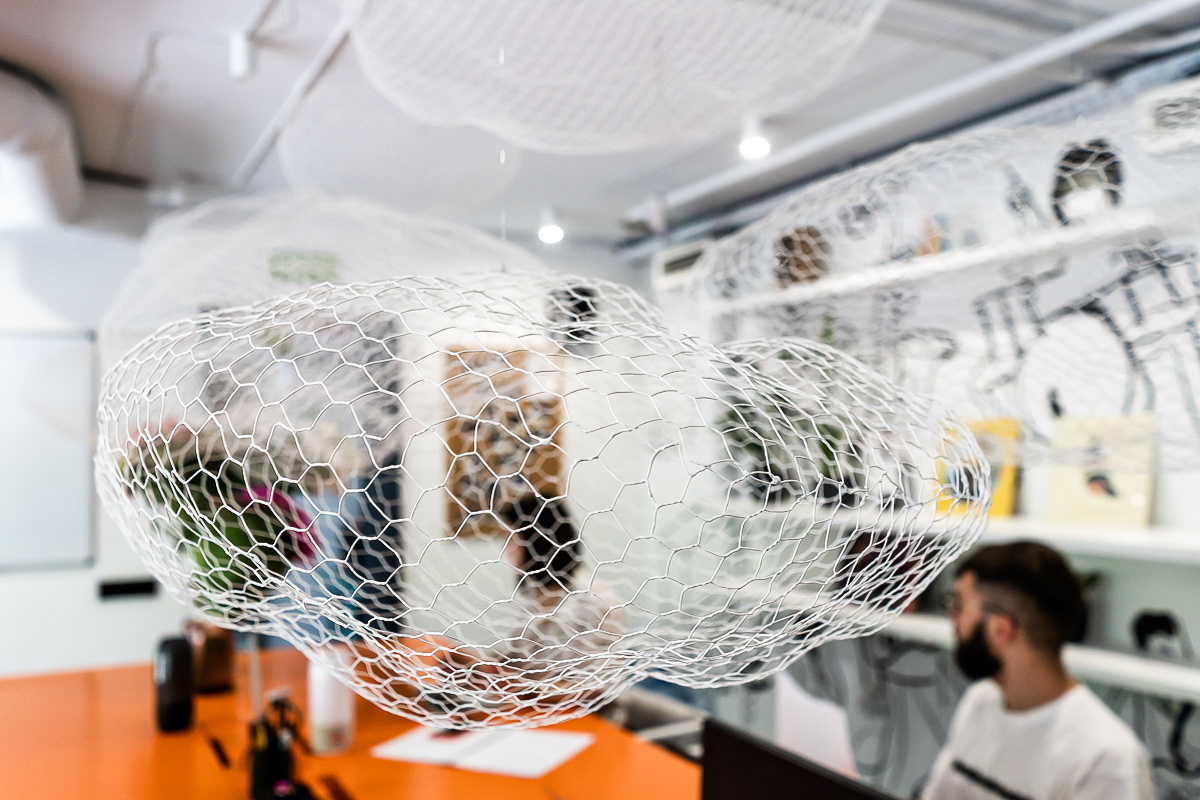
cloud mesh pendant lamp

stairway design

metal structure at stairway
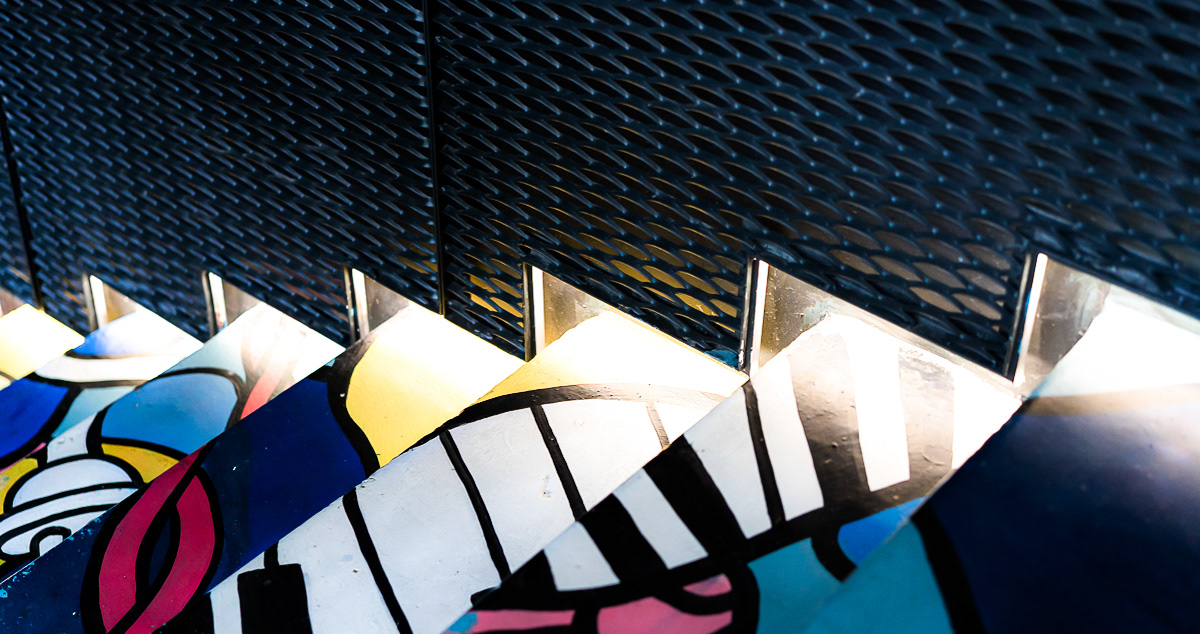
led light on stairs
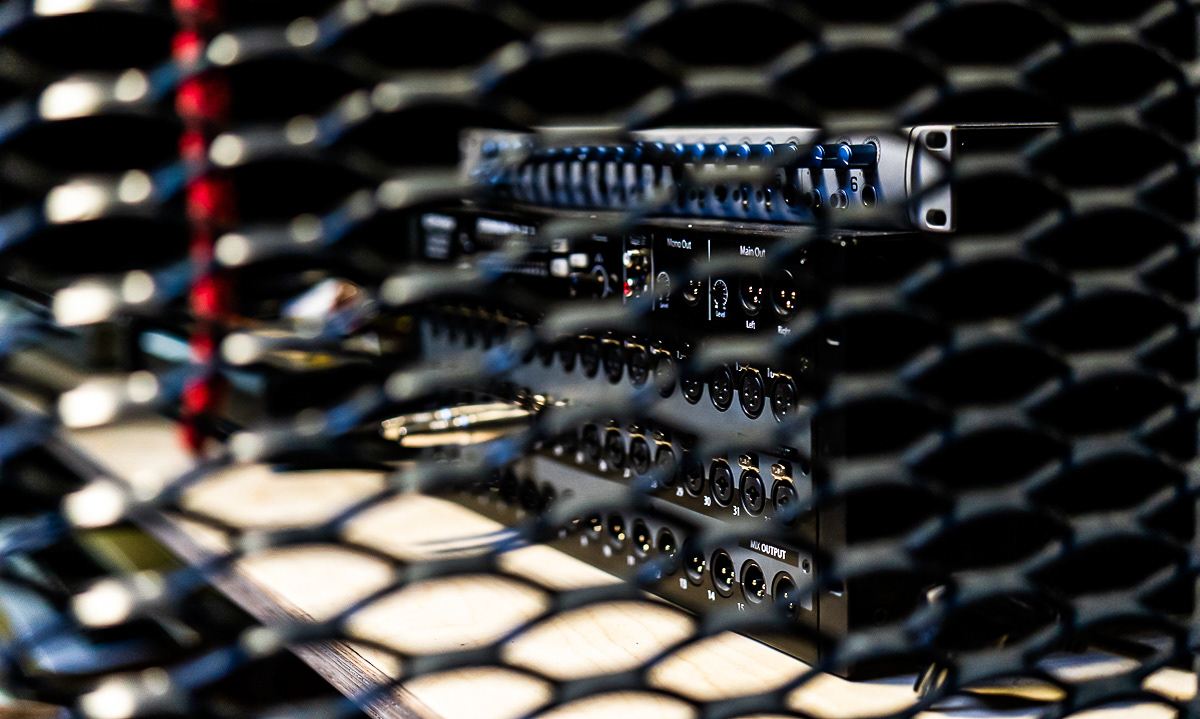
metal mesh
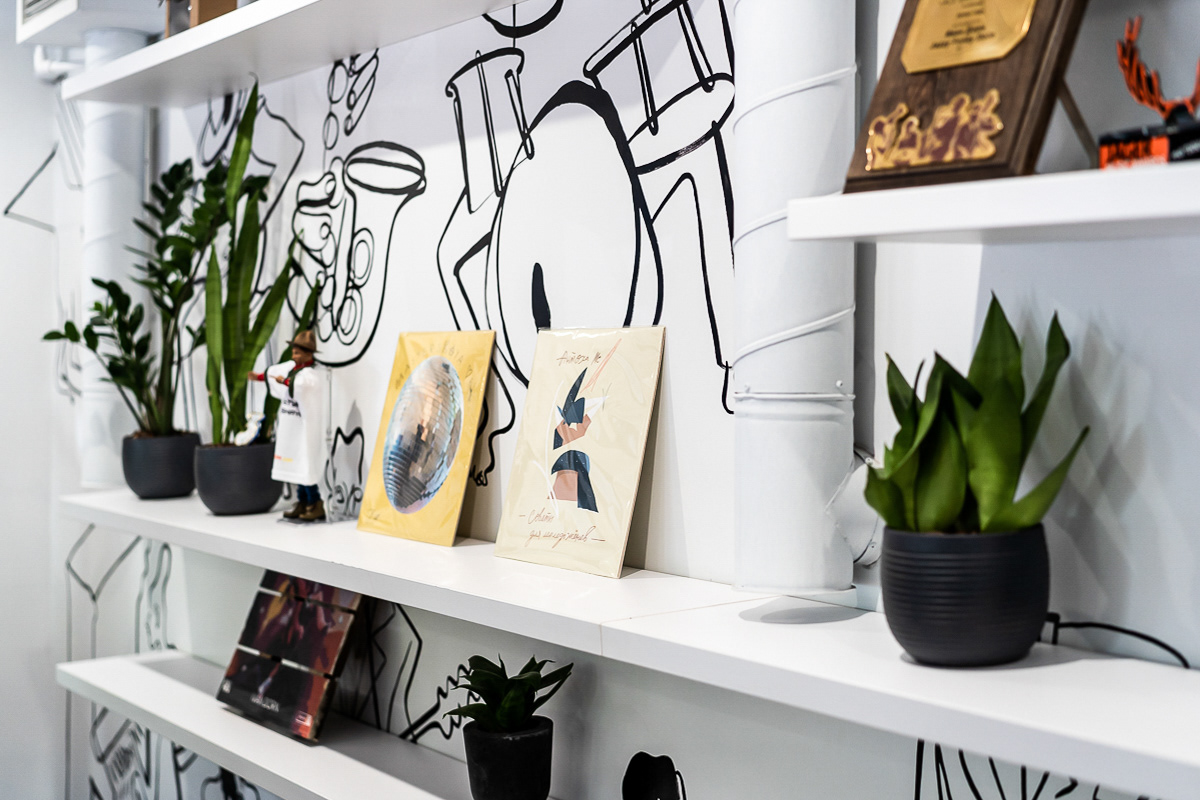
shelves with art
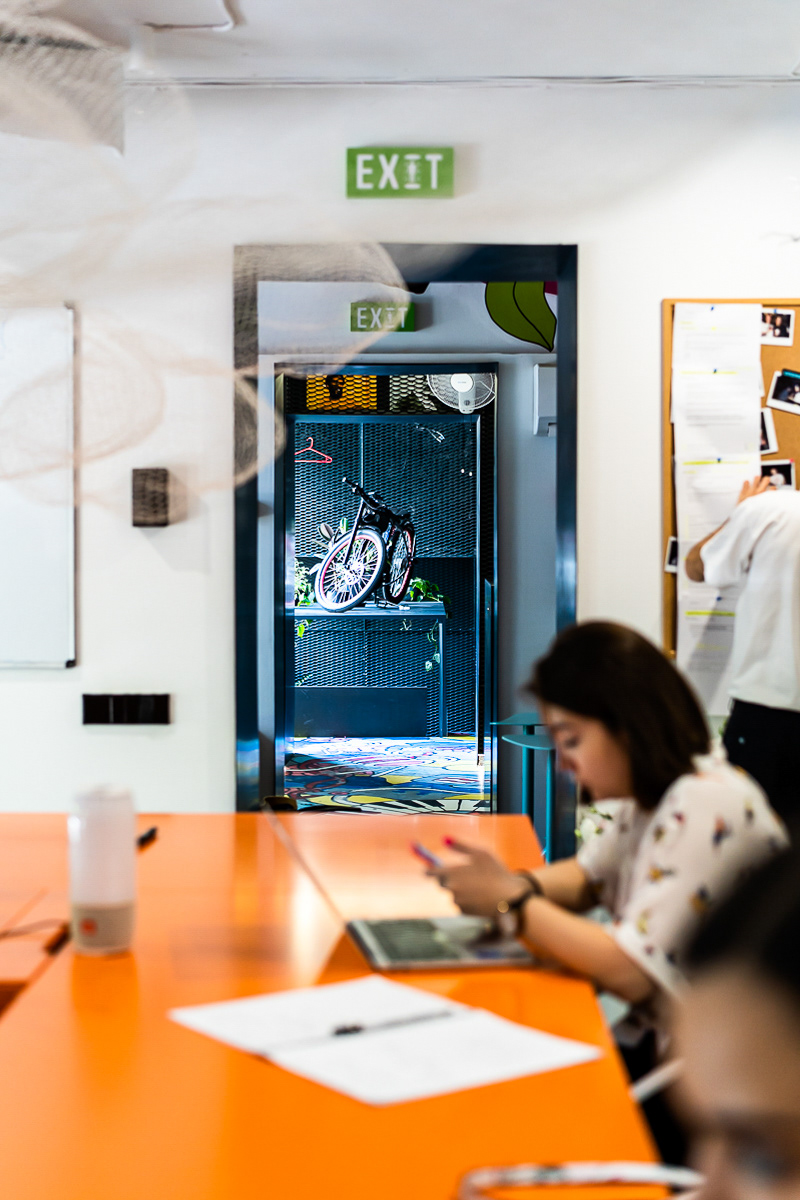
conference office
offices above the recording studio
stairway down to the underground recording studio


